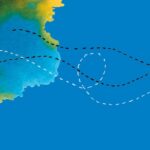Geographic Origins
The Republic of El Salvador is a central American country that lies along the North Pacific Ocean. It is bordered by Guatemala and Honduras.
History of Immigration and Settlement
The chronic problems in El Salvador that have led to the emigration of its people to Australia and elsewhere include land shortages, widespread poverty and conflict between guerilla forces and the army.
Since the 1940s, hundreds of thousands of Salvadorean rural people have moved to El Salvador’s cities in search of work as there is little farming land left. Many farmers, unable to find jobs, have been forced to emigrate. In the late 1960s, Honduran land reform laws forced many Salvadorans living in Honduras to give up their land. This and a long-standing border dispute between El Salvador and Honduras, created tension and fighting that lasted until 1980. In the late 1970s Salvadorans demanded that the government take steps to provide land and jobs for the poor. The military-backed government of President Duarte, installed in 1980, began a number of reforms, including a major program to distribute land to the poor. But social unrest continued to the extent that, during the early 1980s, civil war erupted between government troops and leftist guerrilla forces.
The first substantial influx of Salvadoran political refugees came to Australia against this background in 1983 under the Australian government’s Special Humanitarian Program.
After a return to democratic government in El Salvador between 1982 and 1983, and a USA aid agreement dependent upon the government protecting its people’s civil liberties, in 1989 rebel leftist forces – the Sandinista National Liberation Front – staged an offensive across El Salvador, the worst fighting of the civil war up until that point. Members of the Salvadoran community in South Australia have cited this continued conflict as the main reason for emigrating from El Salvador. While the majority of Salvadorans in Australia are political refugees who have fled the anti-Sandinista government, a number are from the other extreme of the political spectrum, who were forced to leave their homeland because their knowledge of the government’s activities made them a liability to it, and endangered their lives.
Community Activities
For details about Salvadorean community activities and organisations, consult the Latin American entry.
Statistics
The 1991 census recorded that there were 663 Salvadoran-born South Australians. 680 people said that their mothers were born in El Salvador, and 684 that their fathers were.
According to the 1996 census there were 868 Salvadoran-born South Australians, this had grown from 7.8 per cent in 1991 to 8.8 per cent, or 868 in 1996 of their total Australian population.
The 2001 census recorded 822 Salvadoran-born South Australians, while 532 people said that they were of Salvadoran descent.
The 2006 census recorded 762 Salvadoran-born South Australians, while 521 people said that they were of Salvadoran descent.
The 2011 census recorded 778 Salvadoran-born South Australians, while 581 people said that they were of Salvadoran descent.
The 2016 census recorded 750 Salvadoran-born South Australians, while 599 people said that they were of Salvadoran descent.





Comments